Are ivy vines harming and damaging your structures? Although this plant offers a certain kind of appeal when used as decorative materials, it may be harmful. Preventing their growth is the only way to alleviate this issue. We have researched every bit of helpful information to assist you in stopping their growth.
Some types of ivy vines have the capacity to damage fences, especially if the issue is not addressed properly. Here are the ways you can prevent the growth of ivy through your fences:
- Pour boiling water
- Use vinegar
- Use of herbicides
- Cutting and uprooting
- Regular or proper maintenance
- Inhibit their growth by covering the ground with mulch or shredded newspapers or cardboard
Not all ivy vines will beautify your fences, especially those that are too invasive. It can wreak havoc on your property when left alone for long periods. If you plan on removing and preventing these plants from growing, we are here to help you!
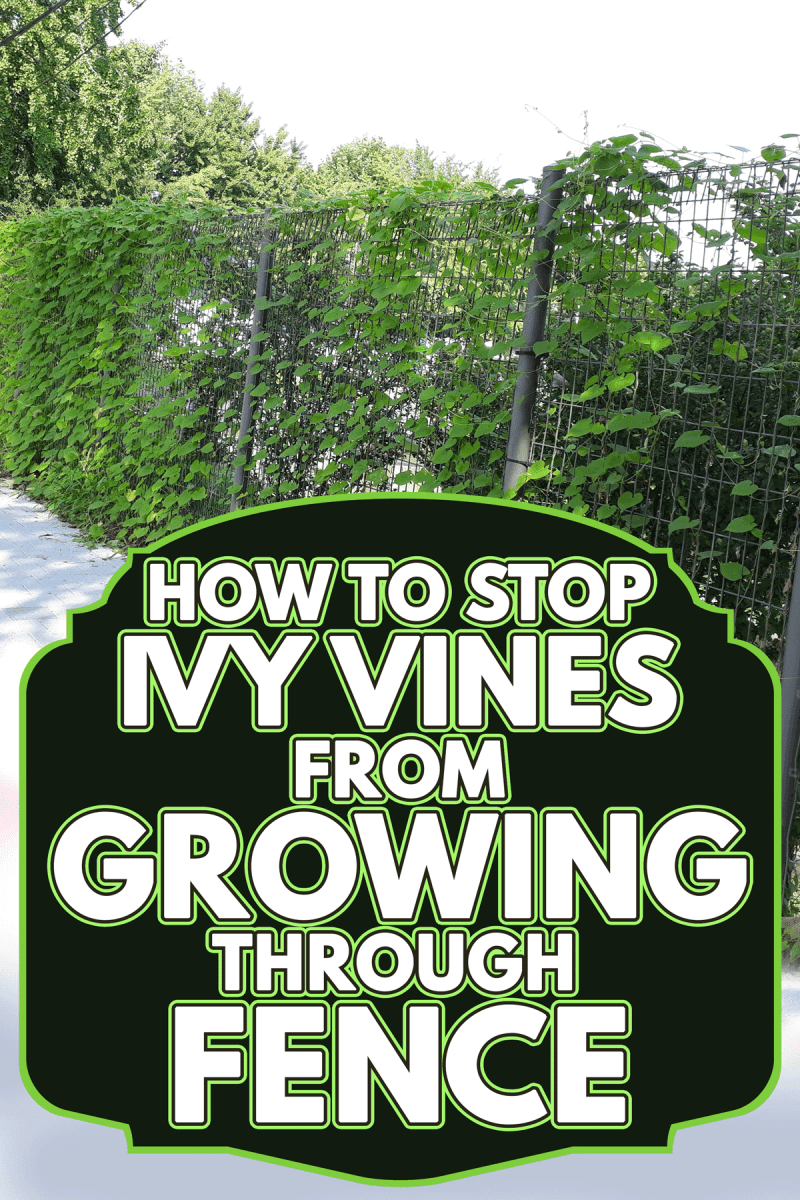
What Are Ivy Vines?
Ivy is basically a fast-growing vine that is used as aesthetics for landscaping and for designing a garden. They usually climb up through surfaces such as trellis, pergolas, and fences.
Unbeknownst to most people, specific kinds of ivy can cause harm to most types of fences, especially those that are made of wood. Rot or decay, and damage to the overall structure of the material are the drawbacks associated with this plant.
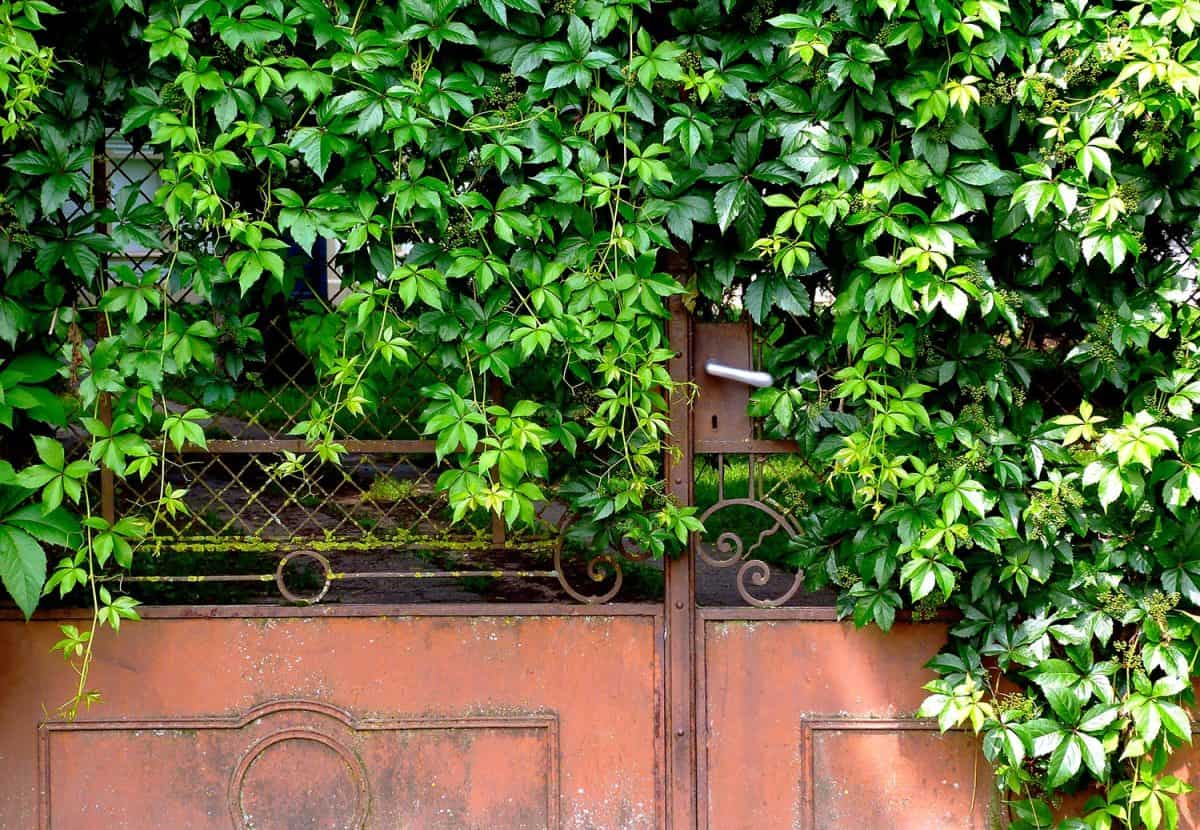
Important Reminders
Before we delve deeper into the topic, it is significant to understand that some of these methods should be carefully applied to the root system of the vines because these substances and chemicals can damage fences and nearby plants.
Steel or metal fences may corrode while wooden materials will decay because the chemicals will seep through the grains. The best way to protect your enclosures is by using a nozzle spray, sponge, or bottle spray. Covering the lower portion of the structure with plastic or tarpaulin is another option.
Ways To Prevent Ivy Vines From Growing Through Your Fence
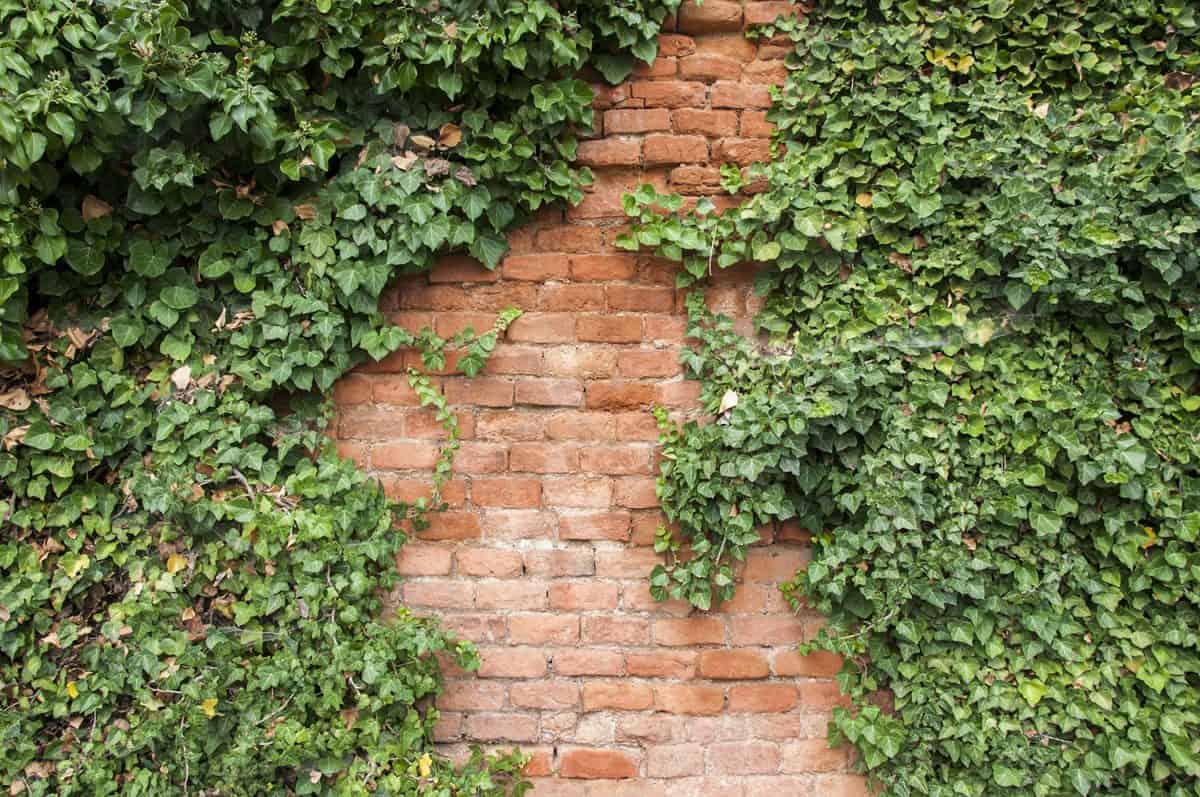
Pour Boiling Water
Pouring boiled water onto the soil is the simplest and safest solution. If you want, you can also mix a small amount of dishwashing liquid. All types of vegetation will wither and die once exposed to boiling or heated water.
Use Vinegar
Vinegar is the most natural way to avert the problem because this condiment has acidic or corrosive properties. Mix one cup of salt with one gallon of vinegar in a heated pot in order to let the salt dissolve. Spray this mixture onto the soil where the vines are rooted.
Be careful when applying this treatment because it is also hazardous to adjacent plants. If you intend to use vinegar, keep your nearby greeneries away from the affected areas.
Use Herbicides
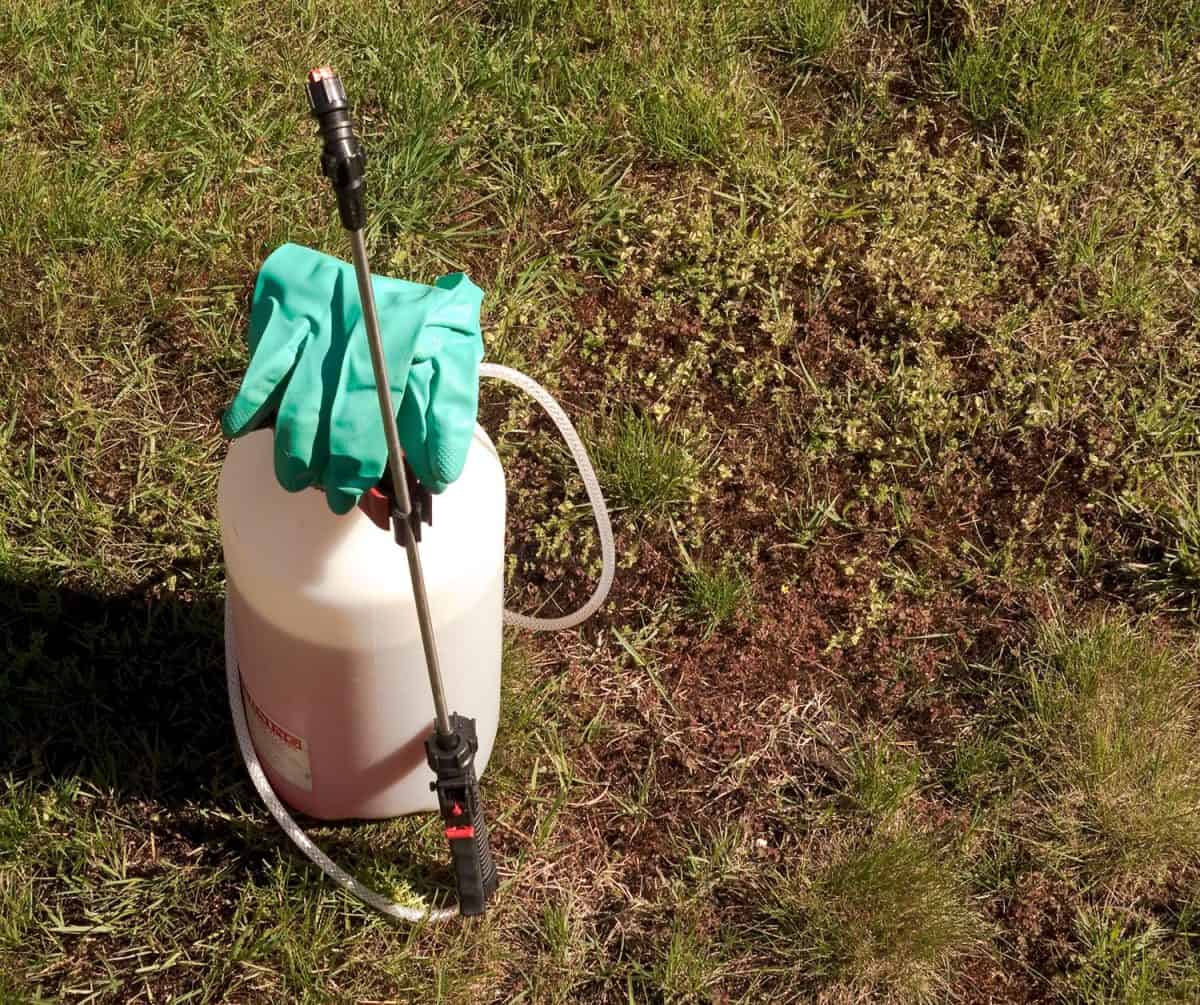
Herbicides are mixtures of substances that are designed to suppress and exterminate unwanted plants. Weed-killers that contain glyphosate, imazapyr, and triclopyr are the most effective chemicals on the market that can eradicate the root system of these vines.
When applying herbicides, do not forget to wear sweaters, protective masks, goggles, and gloves because too much exposure to this substance is toxic to human health.
Cutting and Uprooting
Cutting and uprooting is the most basic way, yet, the most arduous method to remove ivy vines. Simply cut the main branch or stem of the vine using a handheld scythe. Make sure to sever all stalks that connect to the roots.
Once finished, you can apply herbicides or vinegar to the affected area, the stem of the plant, and the roots before removing them to ensure that the foundation of the ivy is completely killed. Make sure that there are no remaining roots to prevent the plant from growing back.
Put the dead roots inside a garbage bag. Do not simply throw them away on one side, especially on the ground because there is a possibility for them to grow back even if you use herbicides. Some chemicals are not strong enough to kill unwanted vegetation.
Regular or Proper Maintenance
Some species of ivy are poisonous and quite invasive. With this being said, you should regularly check your yard for signs of growth. If you notice any changes, immediately apply boiling water, vinegar, or herbicides, and uproot them to prevent their growth.
Inhibit Their Growth
Cover the ground or the eradicated area with layers of mulch, newspapers, or cardboard so that any remaining base system of the ivy would not get any exposure to sunlight; thus, inhibiting their growth.
Mulching is a method of covering the soil with dried leaves, bark, wood chips, and other organic elements to restrain the growth of weeds, retain soil moisture, and improve the overall quality of the ground.
How To Remove Ivy From Your Fence
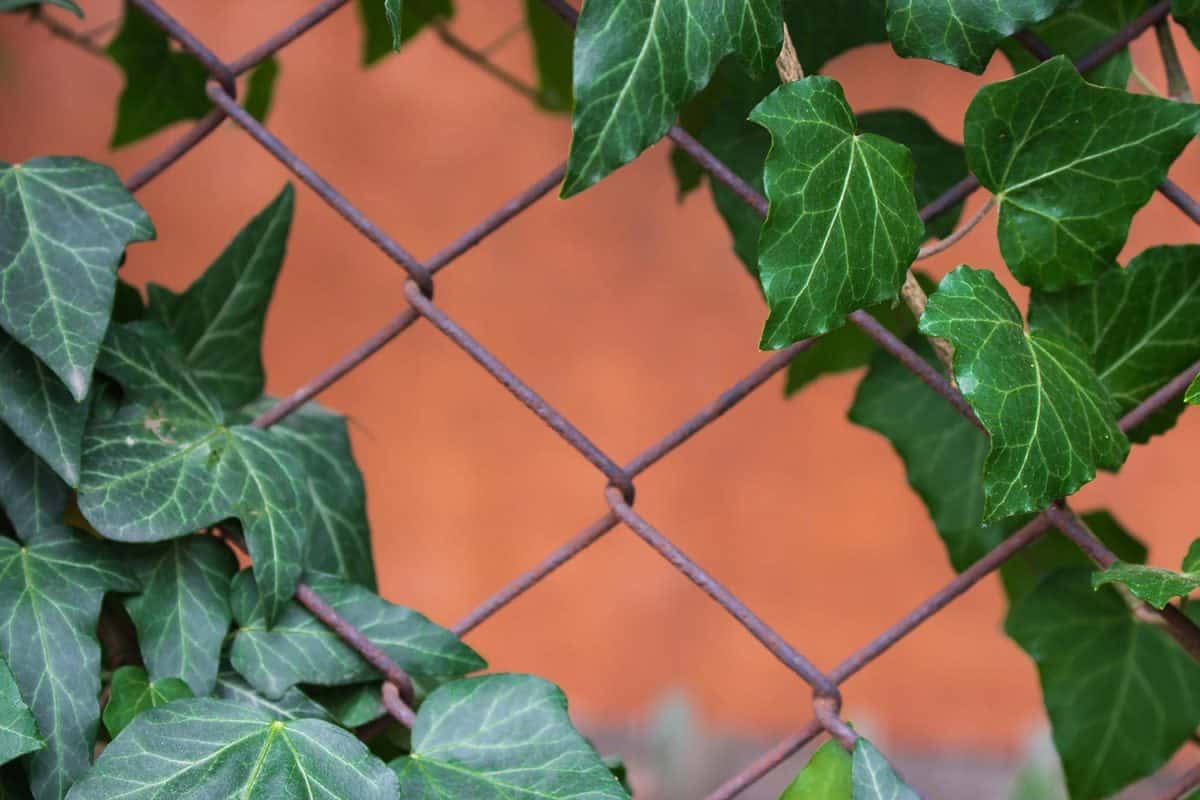
You can also apply the methods mentioned above such as cutting and uprooting, pouring boiling water, and spraying vinegar and herbicides. The only problem now is how to remove the dead ivy that has already crawled through your fence.
Since these vines have a firm hold on the structures, it is best to wait for these plants to be completely dry before trying to remove them. Use gloves to protect your hands from having splinters.
Different Kinds of Harmful Ivy Vines
Woody Vines
Woody vines such as the Common Ivy and Japanese and Chinese Wisteria are plants that can be harmful to your metal and wooden fences. These plants hold excessive moisture that will cause the wood to rot or decay, and the metal to corrode.
The roots can also grow inside the structure through gaps and cracks. This can affect the overall durability of the fence. It will also be more difficult to remove the vines because they already penetrated the material.
Invasive Ivy
Common Ivy, English Ivy, and Japanese Honeysuckle are some invasive species that grow, propagate, and spread rapidly. If not dealt with properly, these vines will not only harm your fence, but also other plants in your garden.
In some instances, people have to use extreme methods such as burning and applying costly herbicides to permanently remove and prevent these plants from growing. Invasive ivy vines need to be regularly checked and be properly maintained or removed so as to not cause any more trouble.
What Non-Invasive Vines Can I Use?
If you still wish to beautify your fence by using this plant, you do not have to worry about invasive species because there are other kinds of vines you can definitely use! They are easier to maintain and less aggressive.
Non-Woody Vines
Non-woody flowering vines such as Morning Glory, Buckwheat, and Bittersweet Nightshade are the best and safest plants to use. Even though they still climb through fences, they are easier to control and maintain. Simply prune the vines, and gently guide them away from other greeneries in your garden.
Unlike invasive species, non-woody vines are less dense. They do not contain excessive moisture that can harm both wood and metal fences. Although these plants offer less privacy, they still add beauty to your home without damaging your property.
American Westeria
Dissimilar to its Chinese and Japanese counterparts, American Westeria is less invasive and aggressive. It blossoms with elegant purple flowers that will certainly give your fences or trellises the best appeal.
Clematis
Clematis is another alternative because these vines grow rapidly but they are still easier to maintain. However, avoid Autumn Clematis because this plant is its invasive counterpart.
In Closing
Ivy vines have a dual effect on your fences. On the one hand, they are sometimes used to adorn and beautify the structure. However, they can also cause damage and prove destructive to your fences and properties. If you are more concerned with the latter, we hope this article proved to be helpful.

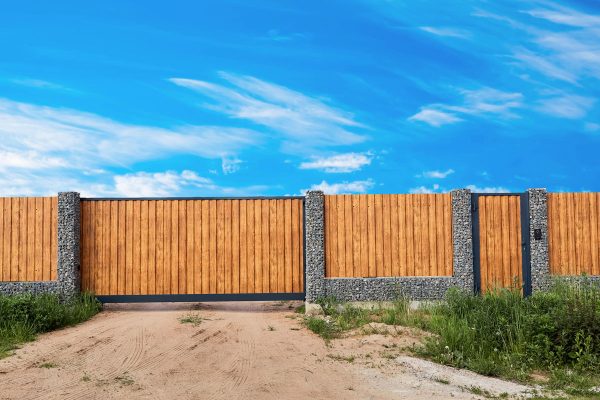
![Close board fence erected around a garden for privacy with wooden fencing panels, concrete posts and kickboards for added durability, Are Gravel Boards Treated? [And How Long Do They Last]](https://fencefixation.com/wp-content/uploads/2022/06/Close-board-fence-erected-around-a-garden-for-privacy-with-wooden-fencing-panels-concrete-posts-and-kickboards-for-added-durability-600x400.jpg)
![Wooden fence with green lawn and trees, Stepped Vs. Racked Fence Installation [Where & How To Use Each]](https://fencefixation.com/wp-content/uploads/2022/06/Wooden-fence-with-green-lawn-and-trees-600x400.jpg)